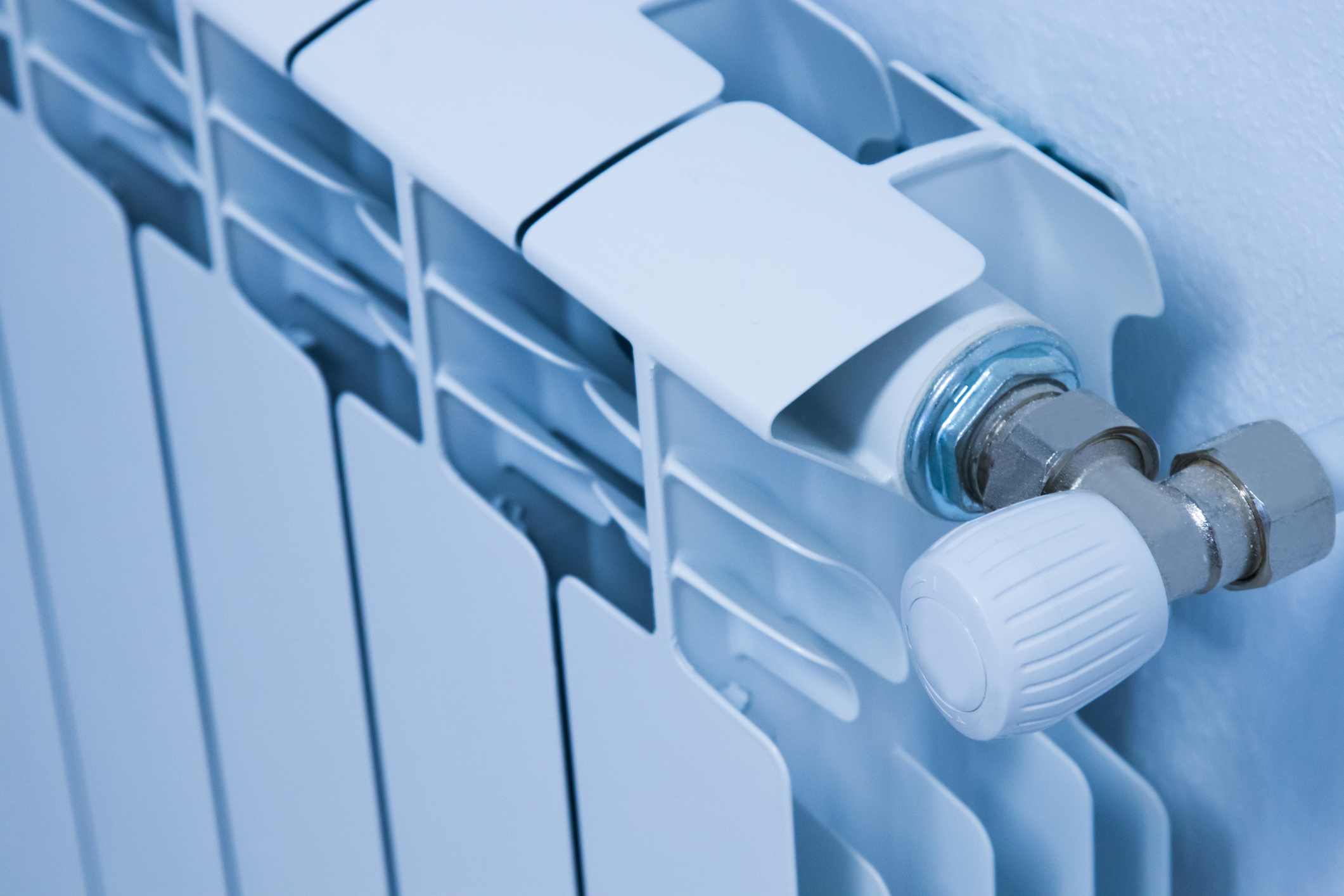Only 5% of homes in the UK do not use central heating. For the 95% of the population, you more or less know the moving parts that keep your house nice and toasty. Your boiler, radiator, and hot water collection work together to make the colder months more bearable. Every part of your central heating system needs to properly work for you to enjoy the benefits of a warm home.
Your boiler takes care of the heating, through gas, fossil fuels, or electricity. They heat the water that enters your home. It splits into two categories, most of that goes into your shower, dishes, and hot tea. The rest of it goes through your radiator and becomes a vital part of keeping you warm.
Heating problems can significantly affect your quality of life, so it is best to get to work. You can choose to DIY some of these problems like balancing your radiator. But when in doubt, always contact a professional.
Find the best local plumbers in the UK!
What Are Radiators?
They are an important part of your central heating. Hot water runs through the series of bent pipes in the radiator. The twists and turns slow down the journey of your water and create a spot where you can feel the concentrated heat. So, when you stand by a radiator, you can feel that heat transfer. The longer it runs, the warmer the room will be.
After the hot water cycles through the house, it goes back to the boiler to reheat. While traditional hot water radiators do not need plugs like other appliances, you can still save energy with proper use, by properly maintaining them throughout the year and turning them off when not in use. With proper use and maintenance, you can extend the life of your central heating system.
When your radiator works properly, you don’t have to increase the heat of your boiler. By changing the set temperature, you can save on electricity and money.
Why Do I Need To Balance My Radiator?
In flats with multiple rooms or large houses, you need to have numerous radiators for your central heating. When radiators run warmer in one place more than another, there is an imbalance with the distribution of hot water.
For example, you find it chilly in the bedroom, and you turn up the heat on your thermostat. You feel fine, but your roommate starts complaining about the temperature in the living room. You check it out and agree that it is significantly warmer than your bedroom. That means that your radiators are not balanced.
When left like this, your boiler will have to work harder to keep your house at a decent temperature. If you don’t live alone, other members of your home may play around with the thermostat too much and destroy your boiler. The worst-case scenario is you get higher fuel bills, and you need to replace your rad and boiler. Just imagining the costs could give you a major headache.
When Do You Balance Your Radiator?
It shouldn’t be too hard to maintain your radiator correctly. Try to balance your radiator once a year or whenever necessary regularly. As soon as you notice one unit taking too much time to heat up, it’s a good sign you need to balance a radiator.
It is a time-consuming task that needs a bit of manual labour. Try to block off a good chunk of your day when you decide to get to work. The more radiators you have in your home, the more work you need to do.
What Is The Difference Between Balancing And Bleeding Your Radiator?
Balancing is about the distribution of heat in your central heating system. Rad A is hot, but Rad C is cold, even with a 30 min wait. Bleeding your radiator is about even heating within the unit. The top part of Rad A is cool, but the bottom of Rad A is hot. Bleeding takes away the air inside the unit, which makes the top part cool.
You need to do both to maintain your radiator properly. When balancing your radiator, you need to bleed it first. However, you do not need to adjust your system every time you bleed your radiator.
How Do You Balance Radiators?
Balancing your radiator is about cycling the water through your system until all your radiators heat up at the right time. The air, debris, or a faulty valve can affect the heating times of your radiators. Balancing it out takes care of most of it.
With the right patience, these steps on how to balance radiator are beginner-friendly. If the DIY method does not work, your radiator might be in worse shape. You may need a professional plumber like Plumbingforce to come in and take care of that. Now, let’s get to it!
Materials and Tools
It is time to invest in a couple of tools so you can do this on the regular. For most radiators you will need the following things:
Radiator bleed key or a screwdriver*
Digital thermometer or multimeter that can work as a thermometer
Lockshield valve adjuster or adjustable wrench
Paper and pen
A helping hand
* If you do not have a radiator bleeding key, a flat-blade screwdriver can work, but it depends on your radiator. Radiator keys are easy to find in your local hardware store, so you may want to invest in one for your toolkit.
DIY Steps To Balancing Radiators
When you do try DIY balancing radiators, do not rush the process. Work with a friend or family member and go through the following steps together.
Turn Off Your Heating System
Radiator balancing should happen when the weather is comfortable or warm because you will be turning your heating system on and off. Give yourself a clean slate and turn off your heating system. It is an essential step in bleeding your radiators. Even if you opt not to bleed, starting from ground zero can give you better numbers for balancing later. Wait for your radiators to cool before proceeding to the next step.
Bleed Your Radiators
Radiators tend to unevenly heat when there is air or debris. Bleeding your radiators first is an ideal step. Start by prepping your space for the leak with towels and a bucket. Use the radiator bleed key and release the air and water. You can read more about draining your radiator here.
Go Through Your Radiator Valves
Open all your radiator valves. Each one has a lockshield valve (LSV) and a thermostatic radiator valve (TRV). Open the TRV manually, no tools necessary. Open the lockshield valve by removing the plastic cap and turning it with a lockshield valve adjuster or an adjustable spanner/wrench. Keep the plastic caps!
Connect with the best local plumbers and boiler engineers near you
Create A Basic Map Of Your Radiators
Take your paper and pen and draw out your radiators, name or number them, so they are easily identifiable. You will need this map to keep track of how the heat distributes in the system.
Turn The Heating System On And Take Notes
After you turn the heating back, it’s a race against time. See the first radiator to heat up, then identify the heating order of your radiators. If you live in a large house, it can be challenging to do it alone. Recruit help and signal each other when other radiators heat up. This step could take a while, but you must get the order right.
Turn It Off Again And Wait Until It Is Cold
Once you have your list, turn the system off again. The radiator balancing starts after this. Make sure that all of the units are cold. You can step out for a while.
Turn The Heating Back
Turn the heating back to a random temperature and go to the first unit on your list.
Adjust The Valves On The First Radiator
Close your lockshield valves completely and slowly open it by a quarter turn as your unit’s temperature reading reaches 12 degrees. Use your thermometer or multimeter here. You can also take note of how long it takes for it to reach 12 degrees for future reference.
Check The Temperature Of The Radiator
Use your digital thermometer to check if the temperature is 12 degrees.
Check The Temperature Of The Pipes
After the unit reaches 12 degrees, move your digital thermometer and take the temperature of the nearby pipe. Take the temperature reading and wait until it reaches 12 degrees as well. Take note of the time between your heater and the neighbouring pipes to heat up. It can help you spot damaged units.
Repeat Until You Finish All The Radiators
Then move to the next radiator on your list. Follow the order of radiators heating up and do steps 8-11 until you finish all the radiators in your home. It shouldn’t take too long for a small flat, but a large house might take a while.
Note
When your radiators are not heating the way they should even after bleeding, check if the valves have signs of corrosion. The air, water, and metal could create debris in the system that could damage your radiator.
You can call a professional plumber for a power flush if the valves are in good condition. It takes 6-10 hours. If the valves are not ok, you can replace them. DIY the replacement or ask a professional.
Do You Need To Balance Radiators With Thermostatic Valves?
Thermostatic radiator valves are slowly phasing out in the era of smart homes. However, that does not mean you don’t have one in your place. The TRV is there to help regulate the heat of your radiator. Without them, the water can be scaldingly hot and be a safety hazard.
There is at least one radiator with a TRV. Since it gets cold water, do they still need balancing? Yes, it does since it is a part of a greater system.
How Long Does It Take To Balance Radiators?
There is no clear answer to how long it takes to get the job done. There are too many variables:
How many radiators do you have?
Are your radiators well-maintained?
How efficient is your boiler?
Did you recently power flush and bleed your radiators?
What model do you have?
How large is your home?
A conservative estimate for how long it takes to finish the job in a small flat is 2-3 hours. A home with multiple floors and many rooms can take up to half a day, maybe more if you don’t have help.
What Is The Quickest Way To Balance Radiators?
There is no quick way to do this. You can streamline the process by having a map, and previous notes ready so you don’t have to watch the clock closely. Doing it right means taking the take to balance each radiator.
However, if you just want to “loosely” correct it, you can open the lockshield valves in the beginning. The rooms that need to heat up quickly should have their LSV’s open fully. Places that don’t get the same traffic should partially open their LSV. This method does not fix your system, but it can do well in a pinch.
When Do You Need Professionals For Radiators?
Always call professional plumbers when in doubt. If there is uneven heating even after bleeding, signs of corrosion, or leaks in the pipework – do not attempt to do it by yourself. These are not DIY friendly. Contact your local plumbers from Plumbingforce for these extreme cases.
You can also opt to get the professionals in when you don’t have the time to go through balancing your radiators. When you have a place that can take half a day they can do it better, save your time for other tasks.
All homeowners should be able to have a little heating-know-how. Learn to do basic maintenance steps yourself so you can troubleshoot radiators in your home. However, it is also essential to identify what you can and cannot do. A well-functioning home is a balance of DIY and professional work.



